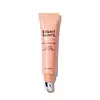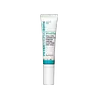What's inside
What's inside
 Key Ingredients
Key Ingredients

 Benefits
Benefits

 Concerns
Concerns

 Ingredients Side-by-side
Ingredients Side-by-side

Water
Skin ConditioningAloe Barbadensis Leaf Juice
Skin ConditioningHelianthus Annuus Seed Oil
EmollientIsopropyl Palmitate
EmollientCetyl Alcohol
EmollientGlyceryl Stearate Se
EmulsifyingGlycerin
HumectantStearic Acid
CleansingNiacinamide
SmoothingSodium Lactate
BufferingHyaluronic Acid
HumectantCamellia Sinensis Leaf Extract
AntimicrobialAvena Sativa Kernel Extract
AbrasiveCentella Asiatica Extract
CleansingEquisetum Arvense Extract
AstringentPelargonium Graveolens Extract
MaskingTaraxacum Officinale Extract
Skin ConditioningArnica Montana Flower
Skin ConditioningCalendula Officinalis Flower Extract
MaskingChamomilla Vulgaris Extract
Skin ProtectingLavandula Angustifolia Oil
MaskingCocos Nucifera Oil
MaskingSimmondsia Chinensis Seed Oil
EmollientRosa Canina Seed Oil
EmollientBoswellia Carterii Oil
MaskingCalophyllum Inophyllum Seed Oil
AntimicrobialMacadamia Ternifolia Seed Oil
EmollientBorago Officinalis Seed Oil
EmollientLinum Usitatissimum Seed Oil
PerfumingOenothera Biennis Oil
EmollientPelargonium Graveolens Leaf Oil
Theobroma Cacao Seed Butter
EmollientButyrospermum Parkii Butter
Skin ConditioningTocopherol
AntioxidantAspartic Acid
MaskingArginine
MaskingPCA
HumectantGlycine
BufferingAlanine
MaskingSerine
MaskingValine
MaskingIsoleucine
Skin ConditioningProline
Skin ConditioningThreonine
Histidine
HumectantPhenylalanine
MaskingPanthenol
Skin ConditioningBeeswax
Emulsion StabilisingSodium PCA
HumectantXanthan Gum
EmulsifyingGlyceryl Stearate
EmollientPotassium Stearate
CleansingEthylhexyl Palmitate
EmollientAlcohol
AntimicrobialSodium Carbomer
Emulsion StabilisingPotassium Sorbate
PreservativeSodium Benzoate
MaskingEthylhexylglycerin
Skin ConditioningPhenoxyethanol
PreservativeWater, Aloe Barbadensis Leaf Juice, Helianthus Annuus Seed Oil, Isopropyl Palmitate, Cetyl Alcohol, Glyceryl Stearate Se, Glycerin, Stearic Acid, Niacinamide, Sodium Lactate, Hyaluronic Acid, Camellia Sinensis Leaf Extract, Avena Sativa Kernel Extract, Centella Asiatica Extract, Equisetum Arvense Extract, Pelargonium Graveolens Extract, Taraxacum Officinale Extract, Arnica Montana Flower, Calendula Officinalis Flower Extract, Chamomilla Vulgaris Extract, Lavandula Angustifolia Oil, Cocos Nucifera Oil, Simmondsia Chinensis Seed Oil, Rosa Canina Seed Oil, Boswellia Carterii Oil, Calophyllum Inophyllum Seed Oil, Macadamia Ternifolia Seed Oil, Borago Officinalis Seed Oil, Linum Usitatissimum Seed Oil, Oenothera Biennis Oil, Pelargonium Graveolens Leaf Oil, Theobroma Cacao Seed Butter, Butyrospermum Parkii Butter, Tocopherol, Aspartic Acid, Arginine, PCA, Glycine, Alanine, Serine, Valine, Isoleucine, Proline, Threonine, Histidine, Phenylalanine, Panthenol, Beeswax, Sodium PCA, Xanthan Gum, Glyceryl Stearate, Potassium Stearate, Ethylhexyl Palmitate, Alcohol, Sodium Carbomer, Potassium Sorbate, Sodium Benzoate, Ethylhexylglycerin, Phenoxyethanol
Water
Skin ConditioningDimethicone
EmollientButylene Glycol
HumectantCetyl PEG/PPG-10/1 Dimethicone
EmulsifyingGlycerin
HumectantPolysilicone-11
Bellis Perennis Flower Extract
Skin ConditioningPEG/PPG-18/18 Dimethicone
EmulsifyingSh-Pentapeptide-5
Skin ConditioningHieracium Pilosella Extract
MaskingCaffeine
Skin ConditioningSodium Hyaluronate
HumectantPotassium Glutathione Isomerized Linoleate
Glucomannan
Skin ConditioningSodium Chloride
MaskingSilica
AbrasiveSilica Silylate
EmollientSodium Citrate
BufferingCitric Acid
BufferingTrihydroxystearin
Skin ConditioningEthylhexyl Palmitate
EmollientLauryl Glucoside
CleansingSodium Benzoate
MaskingEthylhexylglycerin
Skin ConditioningPotassium Chloride
Tetrasodium Glutamate Diacetate
Propylene Glycol
HumectantDecyl Glucoside
CleansingTrisiloxane
Skin ConditioningPotassium Sorbate
PreservativeSodium Dehydroacetate
Preservative1,2-Hexanediol
Skin ConditioningMica
Cosmetic ColorantTriethoxycaprylylsilane
Titanium Dioxide
Cosmetic ColorantIron Oxides
Phenoxyethanol
PreservativeWater, Dimethicone, Butylene Glycol, Cetyl PEG/PPG-10/1 Dimethicone, Glycerin, Polysilicone-11, Bellis Perennis Flower Extract, PEG/PPG-18/18 Dimethicone, Sh-Pentapeptide-5, Hieracium Pilosella Extract, Caffeine, Sodium Hyaluronate, Potassium Glutathione Isomerized Linoleate, Glucomannan, Sodium Chloride, Silica, Silica Silylate, Sodium Citrate, Citric Acid, Trihydroxystearin, Ethylhexyl Palmitate, Lauryl Glucoside, Sodium Benzoate, Ethylhexylglycerin, Potassium Chloride, Tetrasodium Glutamate Diacetate, Propylene Glycol, Decyl Glucoside, Trisiloxane, Potassium Sorbate, Sodium Dehydroacetate, 1,2-Hexanediol, Mica, Triethoxycaprylylsilane, Titanium Dioxide, Iron Oxides, Phenoxyethanol
Ingredients Explained
These ingredients are found in both products.
Ingredients higher up in an ingredient list are typically present in a larger amount.
Ethylhexyl Palmitate, also known as octyl palmitate, is created from 2-ethylhexyl alcohol and palmitic acid. It is a fatty acid ester.
The fatty acid content of Ethylhexyl Palmitate makes it an emollient. Emollients help soften and hydrate your skin by trapping moisture within.
Ethylhexyl Palmitate is also used to help improve the texture of cosmetics. It helps other ingredient dissolve in products and help disperse ingredients more evenly.
You'll likely find this ingredient in sunscreen, as it is often used to mix UV-blocking ingredients such as avobenzone and ethylhexyl triazone.
It can also help stabilize the fragrances in a product as a fragrance fixative.
Ethylhexyl Palmitate can be used to substitute mineral oil.
Due to its high fatty acid content, it may not be fungal-acne safe.
Learn more about Ethylhexyl PalmitateEthylhexylglycerin (we can't pronounce this either) is commonly used as a preservative and skin softener. It is derived from glyceryl.
You might see Ethylhexylglycerin often paired with other preservatives such as phenoxyethanol. Ethylhexylglycerin has been found to increase the effectiveness of these other preservatives.
Glycerin is already naturally found in your skin. It helps moisturize and protect your skin.
A study from 2016 found glycerin to be more effective as a humectant than AHAs and hyaluronic acid.
As a humectant, it helps the skin stay hydrated by pulling moisture to your skin. The low molecular weight of glycerin allows it to pull moisture into the deeper layers of your skin.
Hydrated skin improves your skin barrier; Your skin barrier helps protect against irritants and bacteria.
Glycerin has also been found to have antimicrobial and antiviral properties. Due to these properties, glycerin is often used in wound and burn treatments.
In cosmetics, glycerin is usually derived from plants such as soybean or palm. However, it can also be sourced from animals, such as tallow or animal fat.
This ingredient is organic, colorless, odorless, and non-toxic.
Glycerin is the name for this ingredient in American English. British English uses Glycerol/Glycerine.
Learn more about GlycerinPhenoxyethanol is a preservative that has germicide, antimicrobial, and aromatic properties. Studies show that phenoxyethanol can prevent microbial growth. By itself, it has a scent that is similar to that of a rose.
It's often used in formulations along with Caprylyl Glycol to preserve the shelf life of products.
Potassium Sorbate is a preservative used to prevent yeast and mold in products. It is commonly found in both cosmetic and food products.
This ingredient comes from potassium salt derived from sorbic acid. Sorbic acid is a natural antibiotic and effective against fungus.
Both potassium sorbate and sorbic acid can be found in baked goods, cheeses, dried meats, dried fruit, ice cream, pickles, wine, yogurt, and more.
You'll often find this ingredient used with other preservatives.
Learn more about Potassium SorbateSodium Benzoate is a preservative. It's used in both cosmetic and food products to inhibit the growth of mold and bacteria. It is typically produced synthetically.
Both the US FDA and EU Health Committee have approved the use of sodium benzoate. In the US, levels of 0.1% (of the total product) are allowed.
Sodium benzoate works as a preservative by inhibiting the growth of bacteria inside of cells. It prevents the cell from fermenting a type of sugar using an enzyme called phosphofructokinase.
It is the salt of benzoic acid. Foods containing sodium benzoate include soda, salad dressings, condiments, fruit juices, wines, and snack foods.
Studies for using ascorbic acid and sodium benzoate in cosmetics are lacking, especially in skincare routines with multiple steps.
We always recommend speaking with a professional, such as a dermatologist, if you have any concerns.
Learn more about Sodium BenzoateWater. It's the most common cosmetic ingredient of all. You'll usually see it at the top of ingredient lists, meaning that it makes up the largest part of the product.
So why is it so popular? Water most often acts as a solvent - this means that it helps dissolve other ingredients into the formulation.
You'll also recognize water as that liquid we all need to stay alive. If you see this, drink a glass of water. Stay hydrated!
Learn more about Water